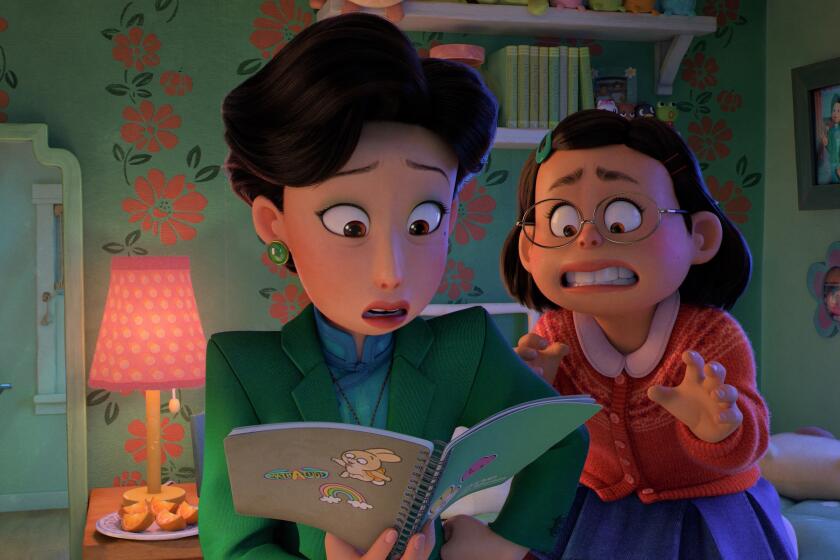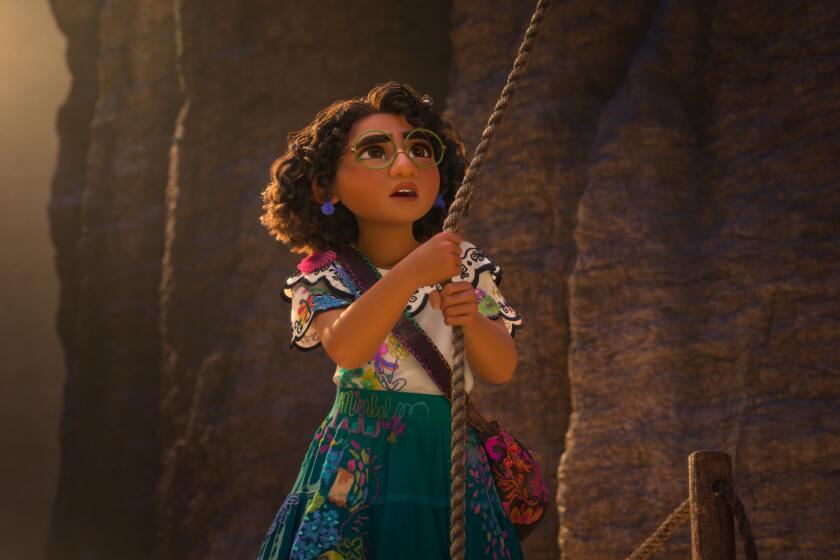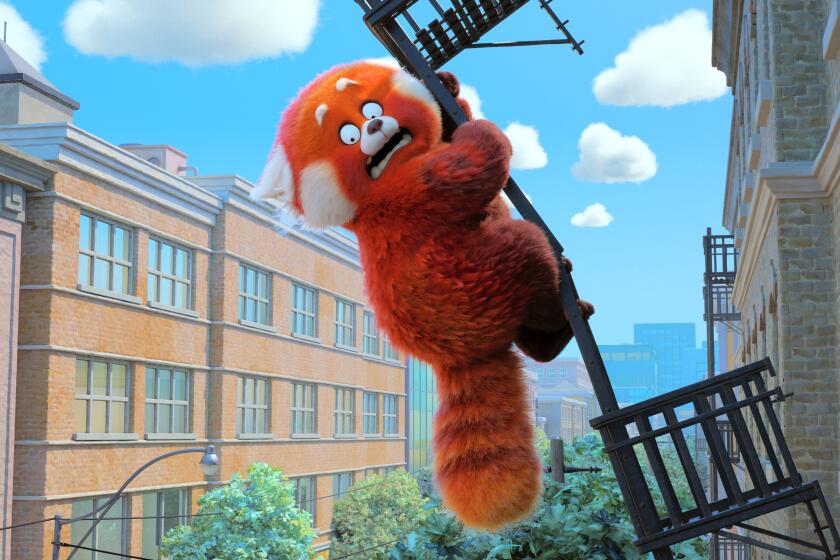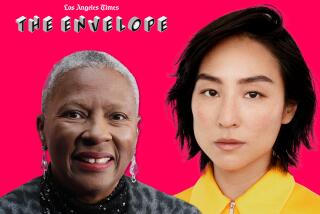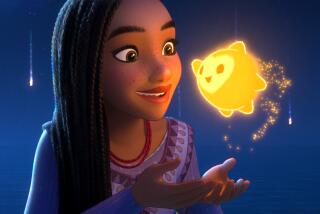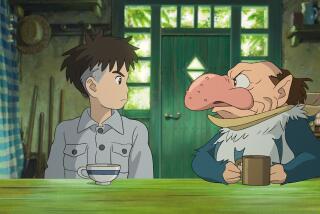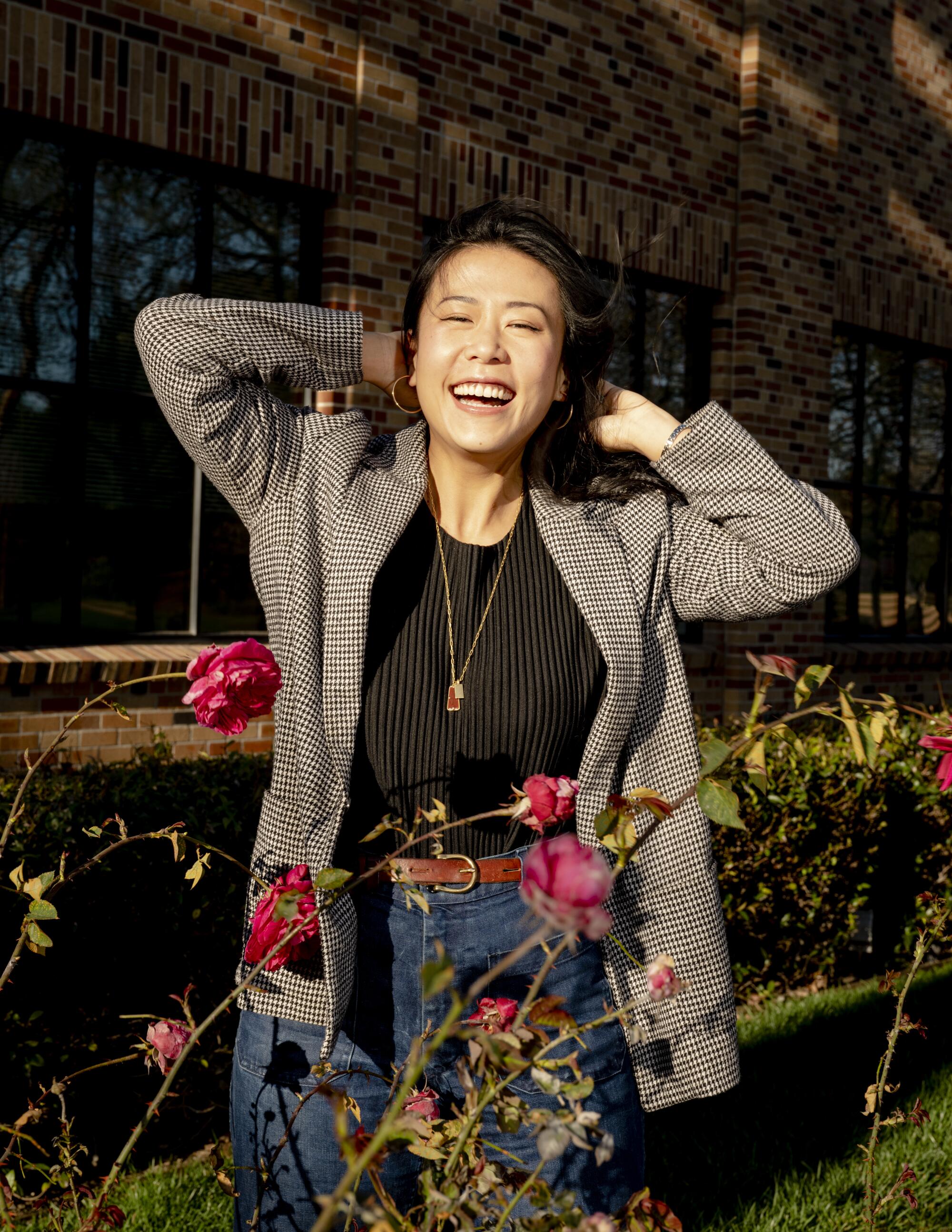
Director Domee Shi is excited as she discusses one of her favorite scenes from her first feature: when Meilin Lee, her 13-year-old protagonist, “goes down her lusty drawing spiral under her bed with her sketchbook.”
After regarding a mindless doodle of a boy she had drawn in the corner of her homework, Mei suddenly gets up from her desk, rolls under her bed and starts frantically drawing picture after picture of her neighborhood crush. The spell is broken only by a knock on her door by her mother.
It’s just one of the glimpses into the world of nerdy tween girls that Shi was thrilled to bring to life for “Turning Red,” the 25th feature from Pixar animation and the first directed solely by a woman. It launches Friday on Disney+.
“I haven’t seen that before in a lot of movies, but it is an experience that, if you talk to any female artists, they have had,” said Shi, who recalls during a recent video call having secret sketchbooks of her own while she was growing up . “I just want people to discover that girls can be as weird and pervy and strange as boys can be with this movie.”
For all its exquisite cultural specificity, Pixar’s ‘Turning Red’ proves that the only real target audience is the one that wants good stories.
“Turning Red” follows Mei (voiced by Rosalie Chiang) as she wakes up one morning to discover that because of a secret family quirk, she has turned into a large red panda. The transformation is not permanent but is triggered when she feels intense emotions. That would be an inconvenience for any teenager, but Mei is also blessed with an overprotective mother, Ming (Sandra Oh), who has no problem embarrassing her in front of her peers.
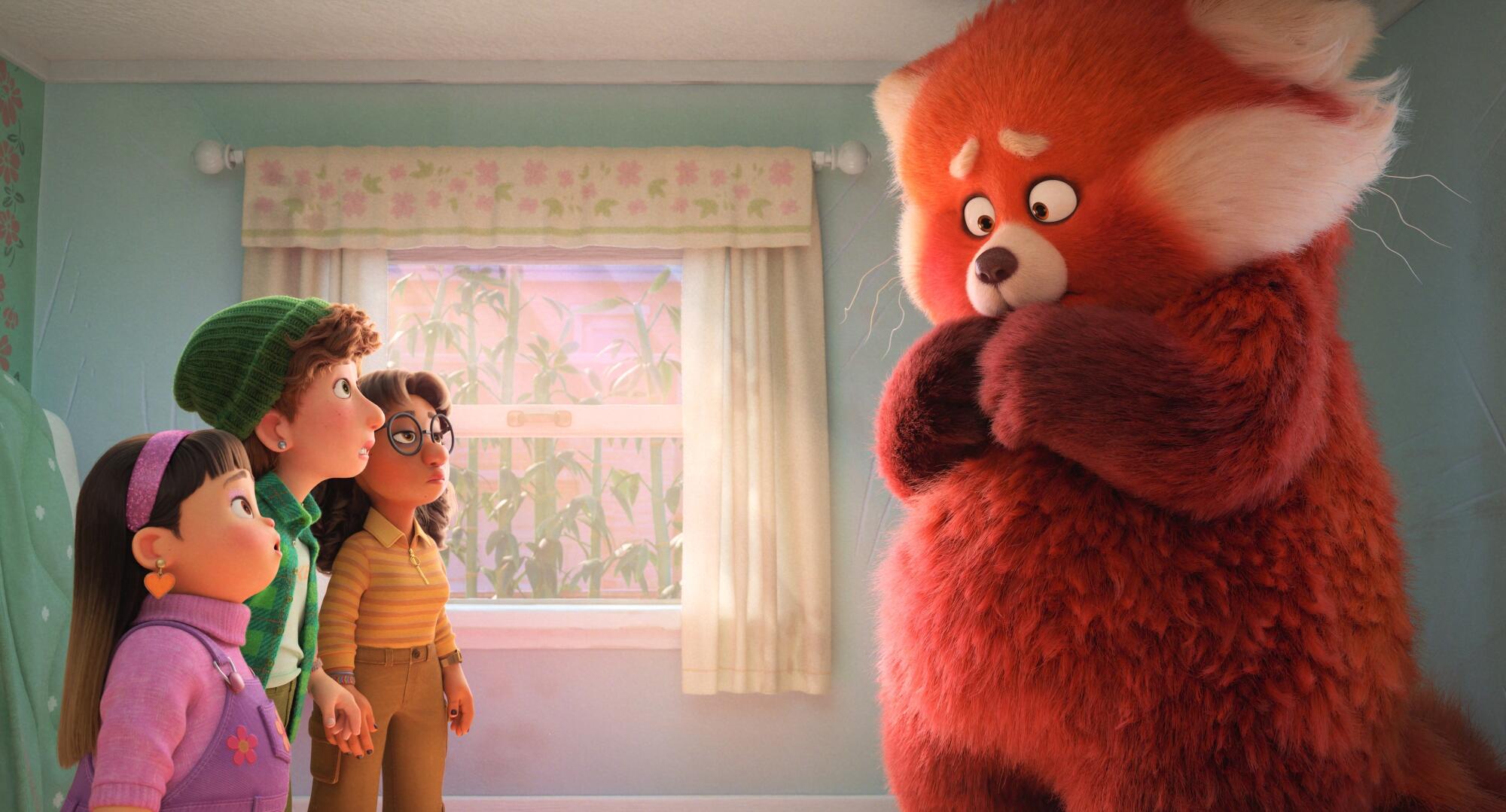
She’ll even show Mei’s secret mer-teen drawings to the exact cute boy who inspired them.
“I like to think that Mei, in all of her innocence, doesn’t know how to draw the lower half of a boy,” said Shi, who insists that a lot of tween girls have a mermaid phase. “So she draws [him with] a mermaid tail, because it’s easier to imagine.”
Although Walt Disney Studios as a whole has started producing more inclusive animated features, including “Moana” (2016), “Coco” (2017), “Soul” (2020), “Raya and the Last Dragon” (2021) and “Encanto” (2021), a story centered on a modern teenage girl is a first for the historically boy-centric Pixar.
As she was wrapping up work on her Academy Award-winning 2018 short “Bao” at Pixar, Shi knew she wanted her next film to be a girl’s coming-of-age story. The Chinese Canadian director describes “Turning Red” as “the most personal and the weirdest” of the feature film ideas she pitched to the studio.
“I pitched it as a girl going through magical puberty,” said Shi. Although elements of the story and even the mechanics of Mei’s transformation evolved over the course of the production, “it was always going to be a girl going through magical puberty and uncontrollably poofing into this giant, red, hormonal creature.”
Set in and around Toronto’s Chinatown in 2002, “Turning Red” is a celebration of teenage girls, their experiences and their interests. This meant channeling Shi’s own teen interests, including anime and boy bands. Below, she discusses how four key influences helped shape the unique expression of “Turning Red.”
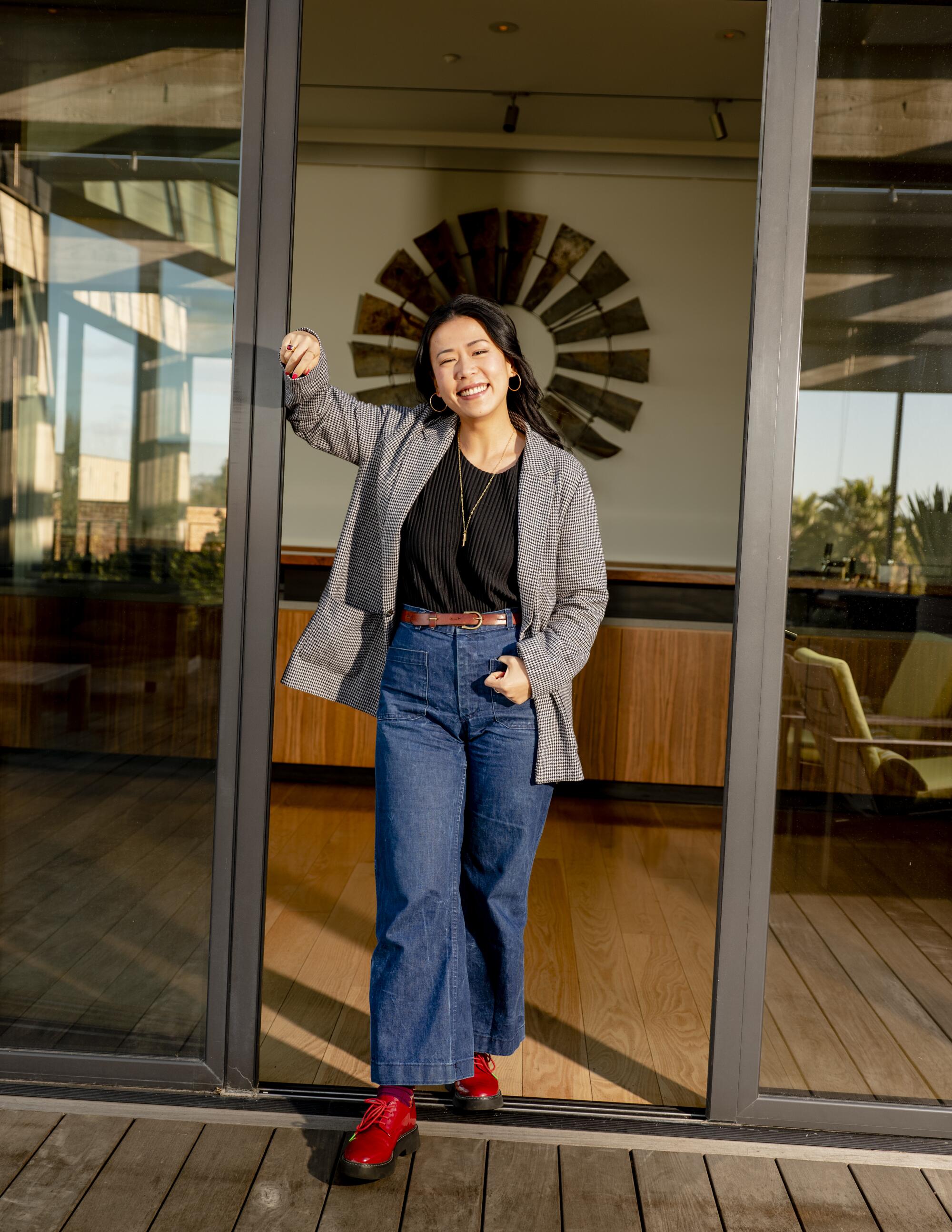
That anime look
“Anime was a huge inspiration for the look of this movie, for the animation style,” said Shi, who grew up watching shows such as “Sailor Moon,” “Pokémon” and “Fruits Basket.” “I’ve always loved how colorful and expressive anime is. How they really exaggerate facial features and character reactions, and you really feel what the characters are feeling at any given moment.”
It “felt like the perfect style to draw from to make us feel what Mei is feeling, because she feels so many big emotions in the story,” Shi added. “We really wanted the world to feel how Mei sees the world.”
The challenge for “Turning Red” was in combining elements of Japanese anime, which is visually more stylized and graphic — and generally two dimensional — with Pixar’s more Western, three-dimensional CG style. But it was a challenge that “everyone on the crew was really excited to explore.”
Much like a delicious dumpling before a hearty meal, “Bao” is the bite-sized animated film audiences see before “Incredibles 2.”
Anime fans will recognize some of the most obvious elements present in “Turning Red,” including how characters’ eyes grow and twinkle when they’re excited, as well as the color palette of the film’s world It’s also reflected in certain camera angles, the lighting and in the characters’ movements.
“The colors of ‘Sailor Moon’ and magical girl anime, we were hugely inspired by that,” said Shi. “There’s just something so romantic and dreamy about those color palettes of those anime from the ’90s that I really wanted to capture in the movie.”
Magical transformations
Beyond specific scenes, the anime influence is also reflected in the way that Mei and her best friends, like the teen warriors of “Sailor Moon,” have their own signature colors. Shi cites titles such as “Ranma 1/2” and “Fruits Basket” — two series where teens are cursed to transform between human and animal forms with specific triggers — as inspiration for the transformation rules and mechanics in “Turning Red.”
“I’ve always loved how fast and loose a lot of anime play with magical transformation,” said Shi. “They don’t really explain too much of the rules of the magic. And everyone kind of just accepts it. We really borrowed that for our movie.”
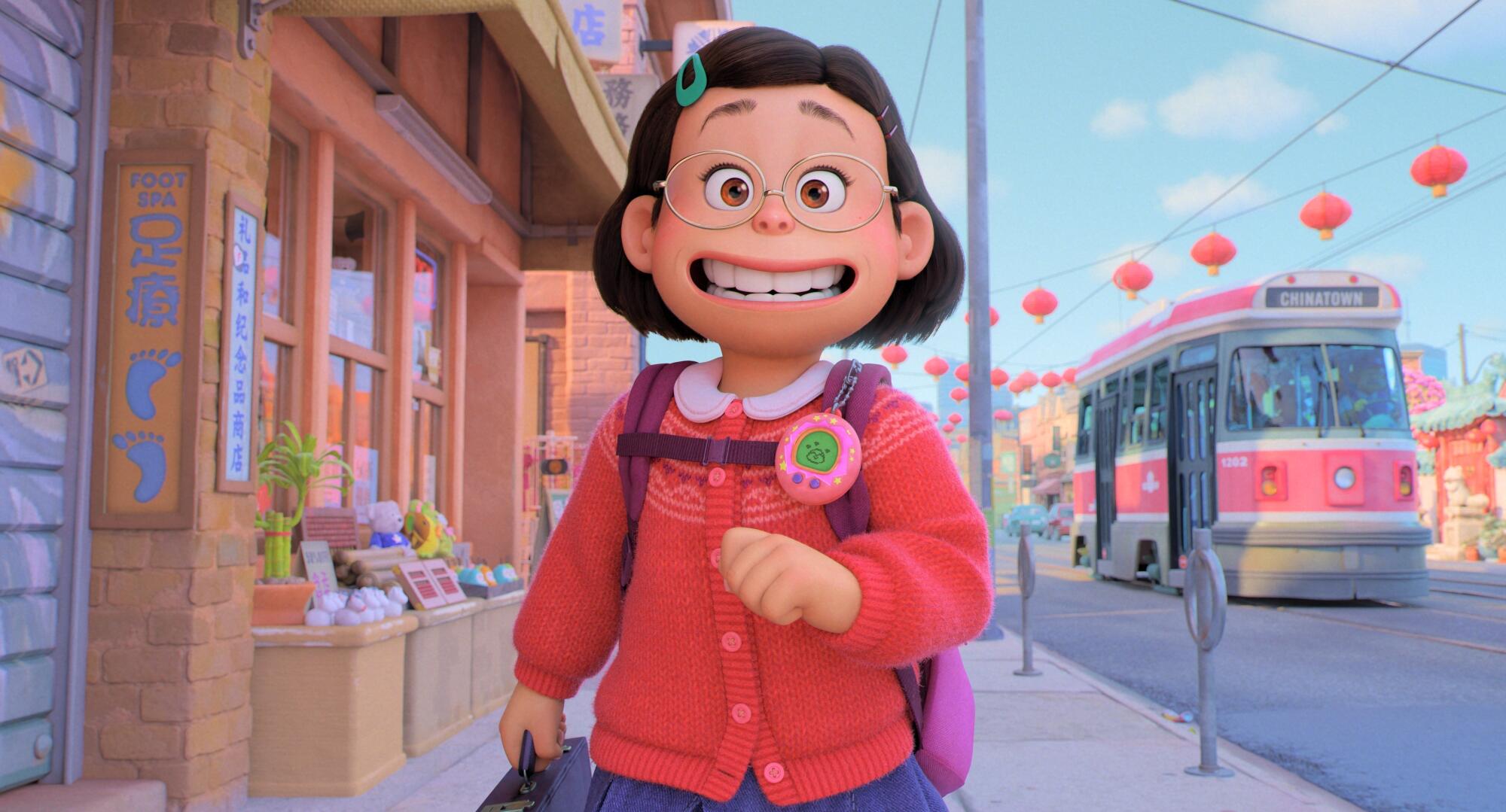
But anime is not the only inspiration behind Mei’s story. Coming-of-age titles Shi remembers watching during her tween and teen years include Disney Channel originals such as “The Thirteenth Year” (about a teen boy who learns he is part mermaid), “The Luck of the Irish” (about a teen boy who learns he is part leprechaun) and “Wendy Wu: Homecoming Warrior” (about a teen girl who learns she is the reincarnation of a powerful warrior).
“I guess the Disney Channel was my biggest creative inspiration for making this movie,” Shi laughed while recalling that even “A Goofy Movie,” one of her favorites, is a story about the tension between an adolescent and their parent.
Family ties
In “Turning Red,” Mei is caught between her love for her parents and family and her love for her friends and interests her parents don’t quite understand. Although “Bao” was also a story about a mother and child, Shi felt she still had more to explore about the dynamics of a mother-daughter relationship.
The director recognizes that the story could have easily fallen into the more typical pattern of the parent being a “militant obstacle” for the kid who wants to break free and become their “true self.”
‘Encanto’ directors Byron Howard, Jared Bush and co-director Charise Castro Smith on why bringing authenticity to a fantasy tale was always a focus.
“But that wasn’t the story I wanted to tell,” said Shi. “It didn’t feel like my story, or the story of a lot of immigrant and Asian kids, who are caught in this struggle between really, truly loving their family and their parents and wanting to honor them and wanting to be good for them. But at the same time, growing up in this environment, in this culture, that’s turning them into different people [who] are naturally moving away from their family.”
Because of this, it was important to establish early in the film that as much as Mei loves her friends, she also genuinely loves hanging out with her mother. In making this film, Shi wanted to show kids that things could get messy and that that’s OK.
“There’s always going to be this push and pull between these two worlds that you’re going to deal with for the rest of your life,” said Shi. “But that’s OK, [and] you’re not alone in feeling this way.”
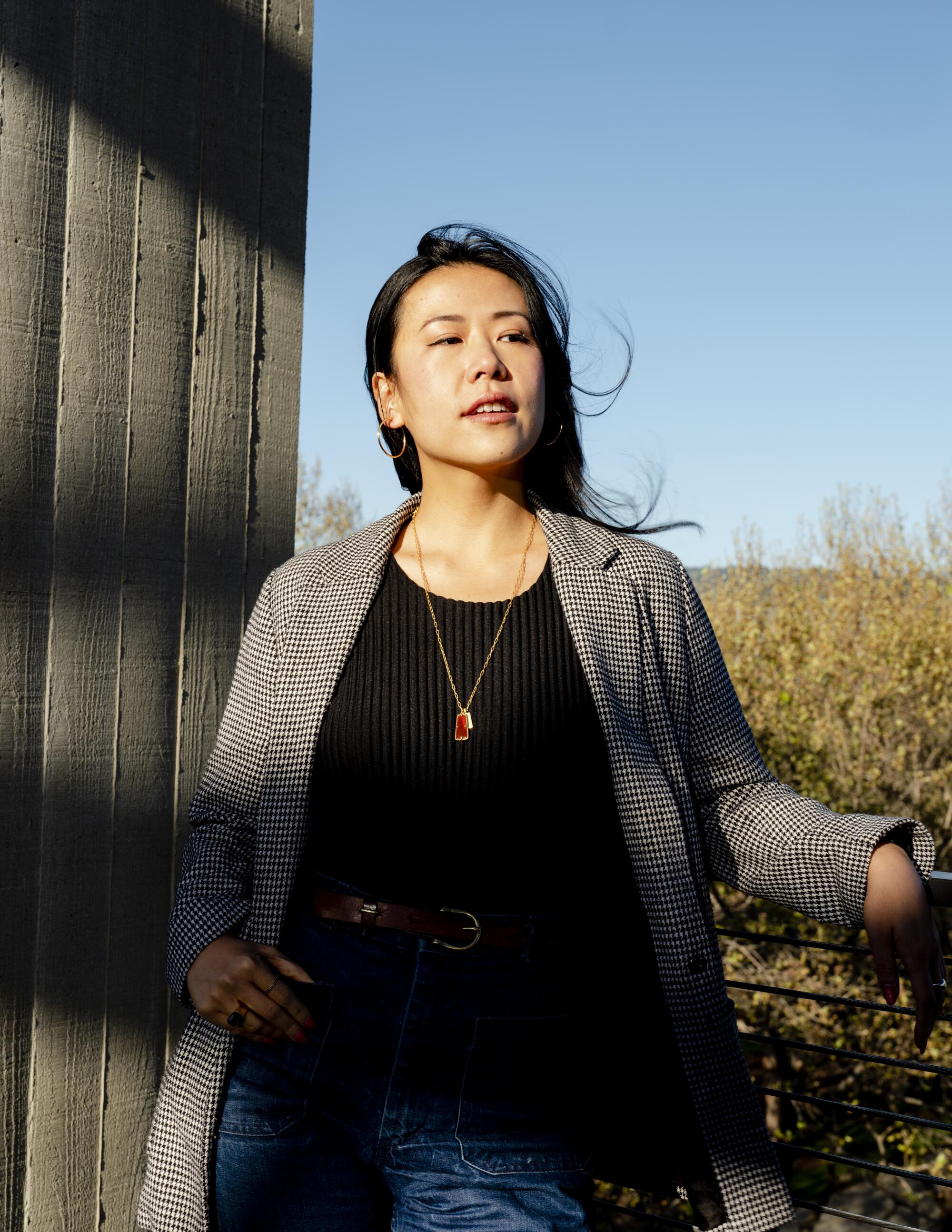
Boy bands
Besides friends and secret crushes, the root of the growing tension between Mei and Ming is Mei’s love for the boy band 4*Town. According to Shi, the band originally started off as just a joke in a scene highlighting how Ming didn’t understand Mei. But the band’s role grew over time, complete with original songs written by Billie Eilish and Finneas O’Connell.
“It just felt right that Mei’s ultimate goal in the movie was not to save the world but to go to her first concert with her best friends,” said Shi. “That felt so 13 and so character specific and perfect.”
This specificity of Mei’s story is one of “Turning Red’s” greatest strengths. And Shi, one of Pixar’s few feature directors of Asian decent, hopes it signals a shift in the types of stories told in films to come.
“We are, hopefully, with this movie redefining what universal stories look like and who gets to tell them too,” said Shi. “The more stories where you see people of different ethnicities, from different backgrounds, go on journeys, make mistakes, fall in love, get hurt, all that stuff, it just proves that we are here and we’re human, and we deserve to have our stories told.”
The mother-daughter tensions within a Chinese Canadian family fuel “Turning Red,” a charming feature debut from “Bao” director Domee Shi.
More to Read
Only good movies
Get the Indie Focus newsletter, Mark Olsen's weekly guide to the world of cinema.
You may occasionally receive promotional content from the Los Angeles Times.
